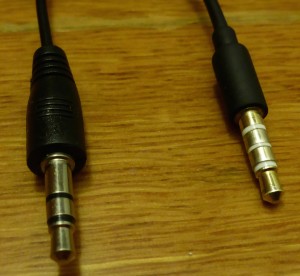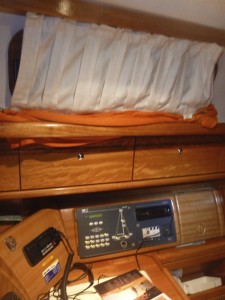Updated 30-Nov-2019
I use this checklist when I am packing for a sailing trip. I go through the checklist to remind me about everything I might bring; everything I don’t need I just check off and move on. If I’ve needed it once it’s on the list; this is meant as a list of ideas not a list of requirements.
The provisioning checklist is separate; mostly consisting of food and miscellaneous things that will be consumed during the trip and can usually be bought for the trip.
Crew Gear
- Personal Water Bottle
- Cash
- Clothes
- Boat Shoes
- Water Shoes
- Pajamas
- Climate appropriate clothes for each day
- Zip convert pants
- Safety Gear
- Sun Protection
- Hat
- Sunglasses
- Croakies
- Sunblock
- Long Sleeve Shirts
- Cold Weather Gear
- Foulies
- Sailing Boots and Gloves
- Sleeping Bag
- Pillow
- Hot Weather Gear
- Lightweight Rain Gear
- Swimsuit
- Mask, Snorkel and Flippers
- Sailing Gloves
- Light Linens
- Pillow
- Toiletries:
- Towel
- Seasickness Medication
- Personal Medication
- Multivitamins
- Toothpaste
- Toothbrush
- Deodorant
- Soap
- Shampoo
- Leave-in Conditioner
- Vitamins
- Q-Tips
- Paperwork
- Passport
- International Drivers License
- PADI or NAUI diver card
- Electronics
- Camera Gear
- Cellphone
- Tablet
- Laptop
- Phone Headset
- Headphone Splitter
- Flash Light
- Misc
Skipper Gear
- Skipper (ASA/US Sailing) Paperwork
- Coast Guard License
- ASA/US Sailing Membership Card
- ASA/US Sailing Logbook
- International Proficency Certificate
- VHF Certificate
- PLB
- Utility Knife
- Marlinspike
- Duct Tape
- Digital Watch
Boat Gear
- Electronics
- Satellite Messenger and/or Satellite Phone
- Charging bricks
- All the extra batteries
- 12V DC to USB Charger
- Powerful Flashlight
- Backup Chartplotter
- Smartphone or Tablet
- Download the Charts!
- Handheld VHF
- Refrigerator Thermometer (affiliate link)
- AUX Stereo Cable
- Handheld Depth Sounder
- Outlet adapters
- Multi-meter
- Safety
- Radar Reflector
- Air Horn
- First Aid Kit
- Antibiotic ointment
- Waterproof band-aids
- Gauze
- Benadryl
- OTC Anti-inflammatory
- Asprin
- Charts
- Cruising Guide(s)
- Bosun’s Chair
- Misc
- Tool Kit
- Squishable Cooler
- Bug Spray
- Hand Sanitizer
- Lighter
- Pencil
- Scrap Paper
- Air Freshener Spray
- Sharpie(s)
- Clothespins (& Clotheslines)
- Fun
- Flotation Devices
- Glow sticks
- Cockpit night light
Specifics
Sleeping Bag, Pillow and Linens
Sleeping bags and linens take up a lot of space so it’s good to find out if they’re provided by your host or chartering company. I’ve never been on a charter boat that didn’t include light linens and pillows.
Headlamp
For safety purposes you want this headlamp to continue working after submersion so you’re visible if you fall overboard. Look for something that is rated IPX67 or better. You also want a headlamp with a red LED that you can turn on and off without cycling through a night vision killing white LED. Unfortunately there is no easy way to tell if a headlamp meets this criteria without getting your hands on one.
I just ordered this headlamp (affiliate link) for an Antigua bareboat charter and will update this after I give it a try (it was great, recommended to friends who are also pleased. Just bought another because I misplaced my original)
If you’re doing night sailing each crew should have a suitable headlamp. If you’ll be tied up at night and only need to manage trips to and from shore you can get by with two or three headlamps on a boat.
Ear Plugs
Ear Plugs are invaluable for sleeping at a noisy slip or with a crew that snores. They can also help prevent ear infections if you’re prone to them. After sleeping a night with earplugs in I always appreciate having a Q-tip handy.
I like silicone earplugs and have used Macks earplugs (affiliate link) for decades. They’re waterproof so you can use them to help prevent ear infections if you’re swimming and they’re very comfortable. The downside is dirt and sand work their way into the silicone so once they’re dirty you need to replace them; I always bring spares.
AUX Cable
If the stereo has an auxiliary port you it’s easy to listen to music from any music player with a headphone output. Sometimes in the boat specs it’s clear:
Other times it’s not clear:

My sailing friends and I estimate that any boat built since 2005 will probably have an auxiliary input. If you’re worried you can bring a backup FM Transmitter. You can also call or email and ask. Or check it out for yourself.
Make sure you get the AUX cable with 3 contact cylinders, not 4. Four cylinder terminals won’t work with older radios but any new audio device will work with 3 or 4 cylinder terminals. I have this model by amazon (affiliate link).
Sailing Watch
I strongly recommend using a watch with a timer alarm for longer sails, especially at night. When you use a timer you can give yourself a time frame to re-check something and have the timer alert you when that time has come. This is even more useful at night where frequently looking at electronic screens can ruin a helmsman’s night vision.
Water Bottle
Each of the crew should have their own water bottle. Something that they can fill up ashore when fresh water is available to conserve the boat’s supply.
I bought a platypus (affiliate link) a few years ago and now I have three. I love the ability to take them ashore when they’re empty without using much space and fill them up. Plus they take up less space in my luggage or day pack if I am traveling or exploring. If I am doing anything more than a weekend trip I usually bring all three of them. They can be tricky though, they tend to fall over if you set them somewhere without closing them and drinking from them takes a bit of getting used to.
PFD
Of course you want to bring your Personal Flotation Device. Just make sure it’s allowed if you’re flying.
12V DC to USB Charger
Most devices you need to keep charged sailing can be charged via USB. A cigarette lighter to USB adapter (affiliate link) adapts the usual 12V DC outlet found on most boats to USB ports. The more ports the better.
Towel

Yes, I know “towel” is on the checklist twice. A towel is the thing I always forget to bring even if I lay it out to pack. I’ve dried myself off so many times using my clean shirt because I’ve forgotten to bring it into the shower with me. “Towel” is on the checklist twice.
I really like “tech” towels. They stay almost dry when as you dry off with them, pack down well as not to take up a bunch of room and are not heavy. I have this one in orange (affiliate link) (a bright color so it’s harder to forget on my way to the shower).
My tech towel also been put to use when spray and leaky hatches threatened our charter boat’s distribution panel.


Can i take supplements on board, and my personal multivitamins?
Absolutely. Especially if they fall under “Personal Medication”.
Great list. Additionally I really, really need a list of things I should check to make sure boat is prepared (electrical, water, etc.. ) and provisioned with (bungs, what type hoses for emergencies, etc.)
Do you have such a list as this will be our first time out and we plan to stay out several years with only occasional marina visits.
I have these bareboat charter checklists but it doesn’t sound like that is quite what you’re looking for. I am working on an offshore delivery checkout list which is probably much closer to what you’re looking for but it’s still a work in progress.
What do you recommend for boat shoes? Can these also be used on land? What water shoes do you suggest?
I’ve been searching and searching for shoes that work well for big boat cruising. I haven’t really found a great solution. Most water shoes that get wet stay wet for too long.
For bareboat charters I usually bring a sturdy pair of sandals (Keen Newports at the moment), a pair of relatively sturdy flip flops and scuba booties for my flippers. I try to keep the Keens dry to use underway. I use the flip flops for dinghy rides and shore excursions that aren’t beach centric. And the scuba booties are my “water shoes”.
If I can keep the Keens dry on a charter I’m in good shape. I can even use them for hikes that require more than flip flops. If they get wet I try to get them dry before we’re underway next.
But wet Keens are rough on my feet, less sturdy on deck and they seem to break down more quickly. They start to smell pretty quickly as well so I find myself going through at least two pairs a season.
I’m always on the lookout for better boat shoes! If you have any leads send them my way!